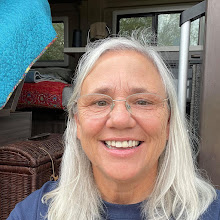Lampasas’ courthouse square had adequate parking and took a lot of pride in what I consider the heart of the city. There were historical markers scattered around that told the history of Lampasas. Mom and I ate at two of the restaurants and our favorite was Eve’s that served wonderful German food. We also stopped at the Museum to learn more about history as well as the springs.
Some of the history of Lampasas is of the Horrell and Higgins families. They were among the early settlers of Lampasas County. Tom, Mart, Merritt, and Sam Horrell were accused of many crimes, including cattle rustling and murder. Pink Higgins was a cattleman and trail driver who, in 1876, began accusing the Horrell Brothers of stealing his cattle. On January 22, 1877, Pink Higgins shot and killed Merritt Horrell in the Gem Saloon. This was the beginning of a six month battle between the Horrell Brothers and Pink Higgins, Bob Mitchell, Bill Wren, and their followers. To read more about the Horrell and Higgins families, click here.
Lampasas County Courthouse After the Texas Legislature created Lampasas County in 1856, official business of the county was conducted from a variety of spaces and buildings. Land for the courthouse square was set aside when the town of Lampasas was platted in the 1850’s. In 1882, the Gulf, Colorado, and Santa Fe Railroad extended their tracks to the county seat, bringing significant growth and prosperity to the area.
In 1883, the commissioners court, with county Judge W.P. Beall presiding, hired Waco architect Wesley Clark Dodson to design the new courthouse. The building contractor and the stone contractors executed Dodson’s plan, completing the building in 1884. Reflecting influences of the second empire and Italianate styles of architecture, the Lampasas County Courthouse features a central clock tower, arched windows and a mansard roof. In 1884, the commissioners court authorized the city to place a Seth Thomas Clock in the tower.
Keystone Hotel, 1870, Famous early day stagecoach inn of J.L.N. Gracy. Windows have keystone arches. Native rock was hauled to the site by oxen. In the rear was a grave of a boy who was killed by Indians.
The Courthouse | The Keystone Hotel |
 |  |
 |  |
 |  |
 |  |
 |  |






0 comments:
Post a Comment